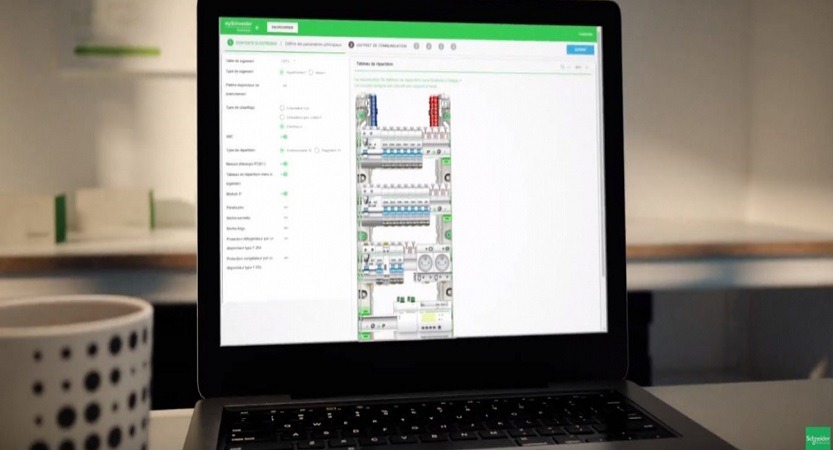When we talk about electrical protection, there is one component that can never be missing from circuits with motors: the motor starter protector (MSP), also widely known as a Motor Protection Circuit Breaker (MPCB). This small device fulfills a vital function: protecting the motor against overloads, short circuits, or electrical faults that could damage it irreversibly.
In this comprehensive guide, you will learn what an MPCB is, what it is used for, how it works, and how to choose the most suitable one, with special mention of CNC Electric MPCBs, a brand recognized for its reliability and precision in electrical protection.
What is a Motor Protection Circuit Breaker (MPCB)?
A Motor Protection Circuit Breaker (MPCB) (also called a motor protector switch) is an electromechanical device designed to protect, control, and operate electric motors.
It combines two types of protection in a single unit:
- Thermal Protection: Acts against prolonged overloads, disconnecting the motor when the current exceeds the nominal value for a certain period.
- Magnetic Protection: Reacts instantly to short circuits or very high current spikes, preventing severe damage.
In summary, the MPCB is the motor’s “guardian,” ensuring that it always operates within safe parameters.
What is a Motor Protection Circuit Breaker (MPCB) used for?
The MPCB has several fundamental functions:
- Motor Protection: Prevents damage from overcurrents, short circuits, or phase failures.
- Start and Stop Control: Many models allow the motor to be turned on or off directly from the MPCB itself.
- Electrical System Safety: Reduces the risk of fires or cable damage due to excess current.
- Simple Maintenance: Facilitates the diagnosis of electrical faults by indicating trips due to overload or short circuit.
- Integration with Automation Systems: Can be combined with contactors and auxiliary relays to automate operations.
👉 In industrial machinery, pumping systems, fans, or CNC equipment, its installation is mandatory to protect the investment and ensure operational continuity.
Types of Motor Protection Circuit Breakers (MPCBs)
There are several types depending on their characteristics:
| MPCB Type | Main Function | Most Common Application |
| Magnetic | Protects only against short circuits | Circuits with external thermal protection |
| Thermomagnetic | Protection against overload and short circuit | General use in electric motors |
CNC Electric MPCB: Precision and Safety
CNC Electric MPCBs stand out for their reliability, durability, and excellent value for money.
Some features that make them a recommended choice:
- Adjustable current range adaptable to different motors.
- High breaking capacity against short circuits.
- Compatibility with contactors and modular accessories.
- Compact design for reduced electrical panels.
- Compliance with international standards (IEC, CE).
Models such as the CNC Electric YCP6 are widely used in CNC machines, control panels, and industrial systems, thanks to their precise protection capability and stable performance.
How to Select a Motor Protection Circuit Breaker (MPCB)
Choosing the right MPCB does not have to be complicated. Just follow these steps:
- Check the Motor Nameplate: Identify its nominal current (in amperes), working voltage, and power.
- Choose the Correct Adjustment Range: Ensure that the MPCB covers the motor’s nominal current (e.g., 10 A motor → 8-12 A MPCB).
- Verify the Breaking Capacity: The device must be capable of interrupting the maximum current expected in case of a short circuit.
- Select the Appropriate Tripping Curve: For motors with high starting current peaks (like pumps or CNC), choose a slow tripping curve (D or K).
- Check Compatibility and Accessories: If you need remote control or signaling, look for models with auxiliary contacts.
- Trust Certified Brands: CNC Electric MPCBs offer quality assurance and comply with international standards.
💡 Practical Tip: Adjust the thermal selector just above the motor’s nominal current. This prevents unnecessary trips and effectively protects the equipment.
MPCB Applications
MPCBs are used in virtually every sector where electric motors are present:
- Pumping systems and compressors
- CNC machines and industrial equipment
- Conveyor belts
- Fans, extractors, and HVAC
- Electrical workshops and control panels
- Residential or commercial installations with single-phase motors
Their versatility and ease of installation make them an indispensable element in any modern electrical system.
Frequently Asked Questions about MPCBs
- What is an MPCB used for?To protect electric motors against overloads, short circuits, or phase failures.
- What is the CNC Electric MPCB used for?It serves to ensure the precise protection and control of motors, preventing unwanted shutdowns and extending their useful life.
- How do I select an MPCB?You need to know the motor’s nominal current, the device’s adjustable range, the tripping curve, and the type of application (e.g., CNC machinery or pumps).
- Can I use a common circuit breaker instead of an MPCB?It is not recommended. Standard circuit breakers do not tolerate motor starting current peaks well and might trip unnecessarily.
- What maintenance does an MPCB need?It only requires periodic inspections: cleaning contacts, checking settings, and testing the trip function to ensure proper operation.
Conclusion
The Motor Protection Circuit Breaker (MPCB) is much more than a simple switch: it is the first line of defense that protects your motor and your electrical installation.
Whether in CNC machines, pumping systems, or industrial equipment, relying on a CNC Electric MPCB ensures safety, precision, and confidence.


